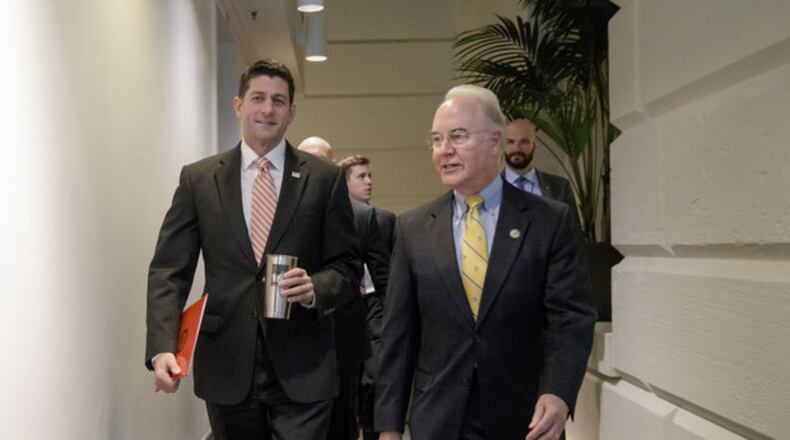The Republicans' long-awaited replacement plan for Obamacare has now been revealed, at least in part. And it's pretty clear why they have been so reluctant to make it public: This is one ugly baby.
In fact, if enacted into law, the GOP plan would strip millions and millions of our fellow Americans of their health insurance, and all the progress that we've made in reducing the percentage of uninsured to record low levels will be quickly reversed.
Some would be forced to drop their policies because the subsidies that have allowed them to purchase individual coverage will be slashed and slashed dramatically in many instances. Others would lose coverage as the expansion of Medicaid is rolled back by the GOP bill, and as federal funding for traditional Medicaid is cut as well. We have no good estimate on how many millions will be affected -- House Speaker Paul Ryan is trying to force the plan through the committee process before the Congressional Budget Office can produce such numbers -- but there is no plausible way to make cuts of the proposed magnitude without significant reductions in coverage.
On the other hand, if you're wealthy, the House plan gives you a lot to smile about. The taxes on Americans making more than $200,000 a year that have helped to pay for Obamacare and that make it deficit-neutral at worst would be rolled back under the House plan, producing an average tax benefit of $165,000 a year for those in the top 0.1 percent, according to the Tax Policy Center.
And if we don't have CBO numbers yet, we do have other tools by which to gauge the impact of this plan. The Kaiser Family Foundation, for example, has created a database allowing a county-by-county analysis of the impact of the House plan for individuals in various age and income groups. It compares the amount of subsidy that would be available under Obamacare in 2020 to the amount proposed in the GOP House plan. So let's take a look at what would happen to a typical 60-year-old making $40,000 a year, attempting to buy insurance on the private market:
Those regions in blue represent areas where the $4,000 tax credit available to 60-year-olds under the House plan would be lower than what they would get under Obamacare. As you'll note, many of the darkest blue areas are right here in Georgia.
Let's say that you're a 60-year-old in Dougherty County and its county seat of Albany, in southwest Georgia, making $40,000 a year. Kaiser estimates that in 2020, you would get a subsidy of $11,400 to help you buy insurance under Obamacare. Under the GOP's replacement plan, you would get a tax credit of $4,000.
All of a sudden, the out-of-pocket cost of health insurance just rose $7,400, and for a person at that income level, it just became unaffordable. That $4,000 might be enough to buy a bare-bones plan for catastrophic coverage, but the deductibles would be much higher than under the worst Obamacare plan, and it would pretty much close off general access to health care. Many people just won't bother.
We could also look north to Union County and its county seat of Blairsville, along the North Carolina border. A 60-year-old trying to buy individual coverage there would get a subsidy of $9,130 under Obamacare, but $4,000 under the House plan. Again, a $5,130 increase in the out-of-pocket expense for health insurance simply isn't affordable for that person.
But wait, because it gets worse. Under Obamacare, insurance companies can charge our 60-year-old friend a maximum of three times as much as it charges a younger customer. Under the House replacement plan, that multiple jumps to five times as much. In other words, as the subsidy drops for older Americans, the cost of similar coverage will increase.
The impacts will extend well beyond the individual to the communities in which they live. For example, when that 60-year-old Blairsville resident drops insurance as unaffordable, he or she is no longer a paying customer for the local health-care system and in fact becomes a financial burden due to uncompensated care. The already difficult financial situation for rural and small-town hospitals and doctors will worsen, and it will worsen again as Medicaid cuts further reduce their base of paying customers.
In many of these places, the methamphetamine and opiate epidemics are taking a vicious toll, and without insurance drug-treatment options disappear. Just last year, three local doctors, including the CEO of Union General Hospital in Blairsville, were arrested and charged with running a prescription drug ring for oxycodone and other opiates that also extended into North Carolina.
Oh, and one other thing. In the 2016 elections, 81.6 percent of Union County voted for Donald Trump, the man who promised repeatedly that under his Obamacare replacement plan, nobody would lose insurance coverage.
About the Author
The Latest
Featured



